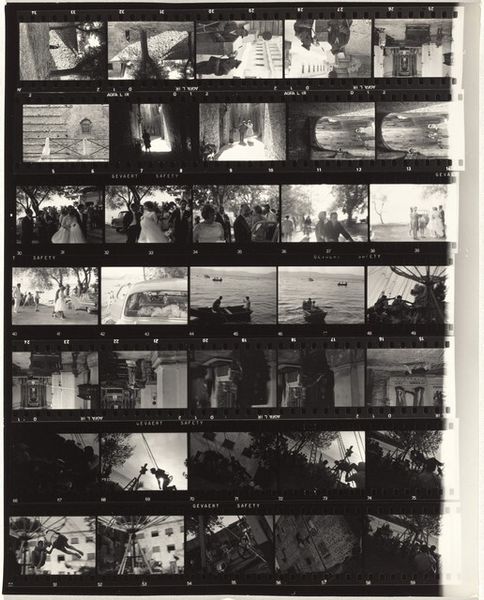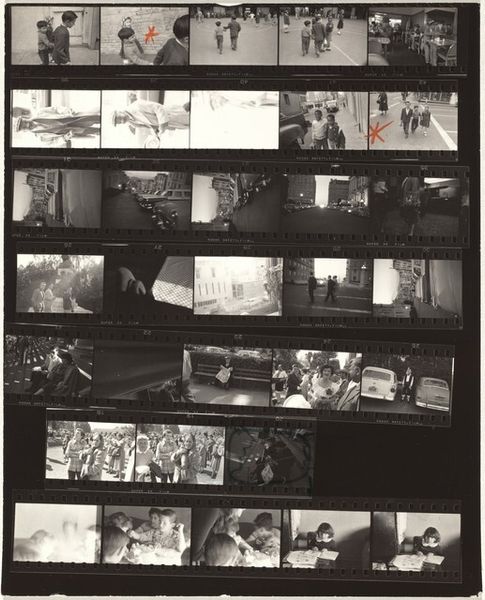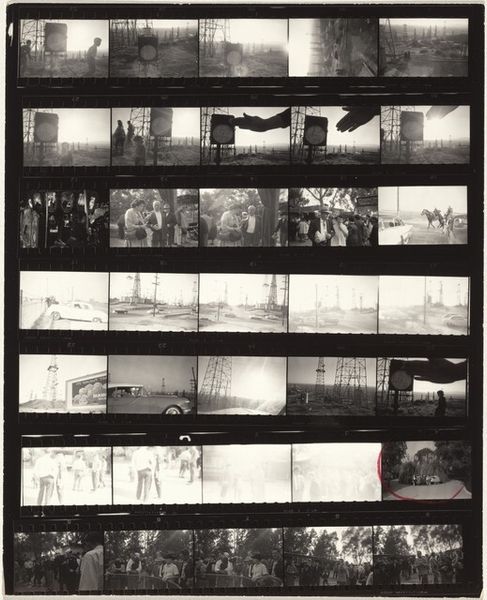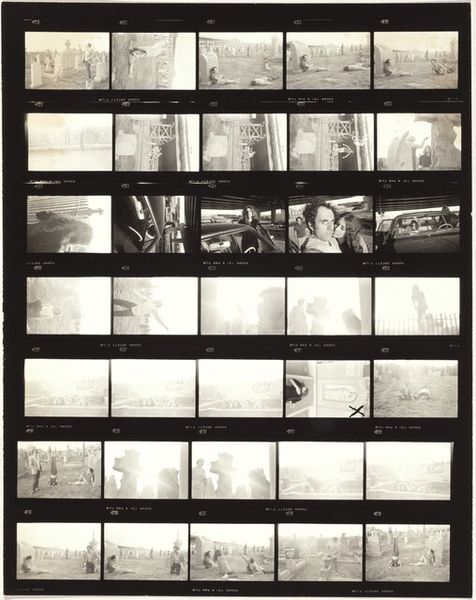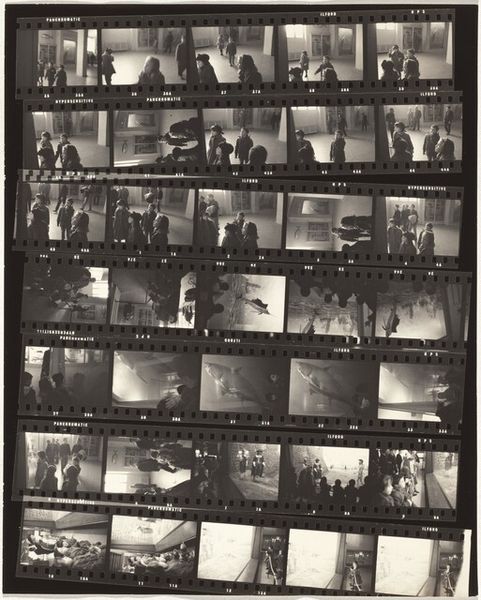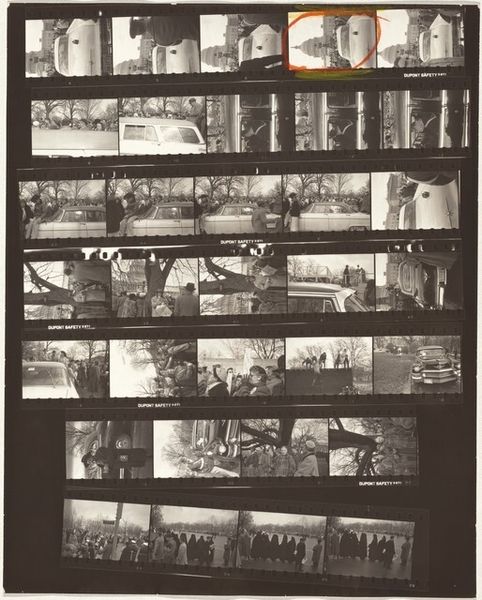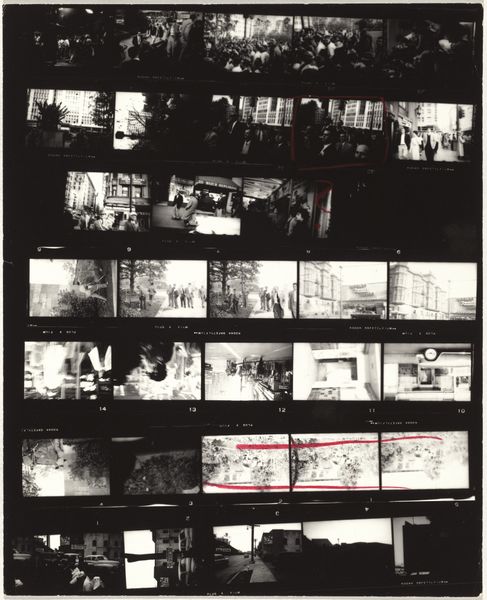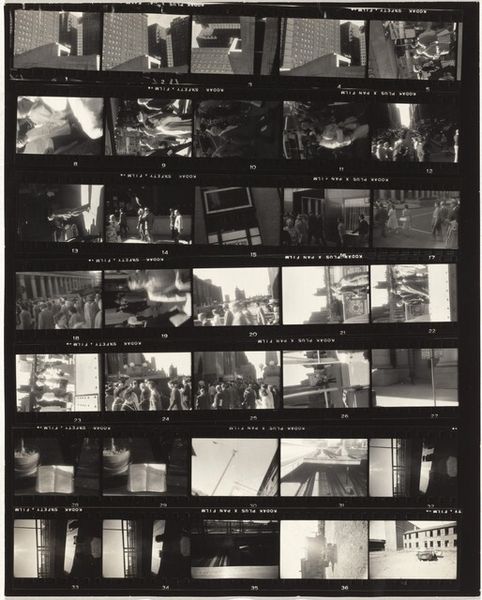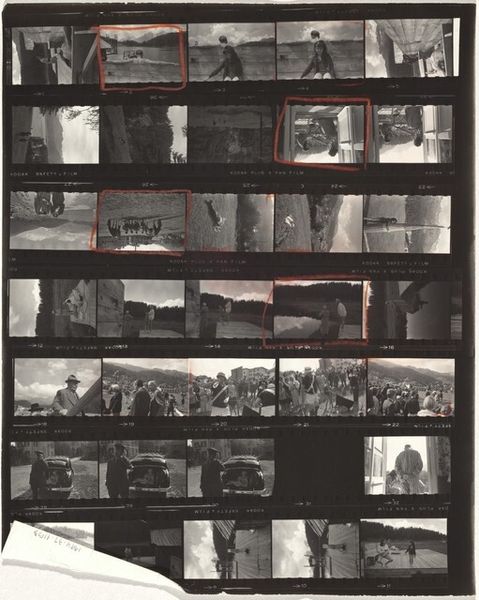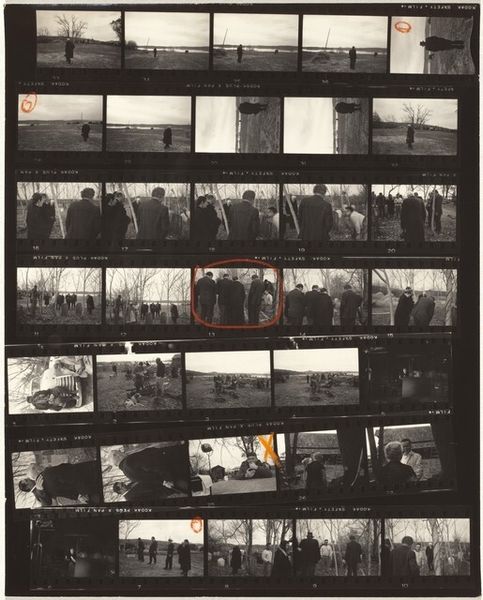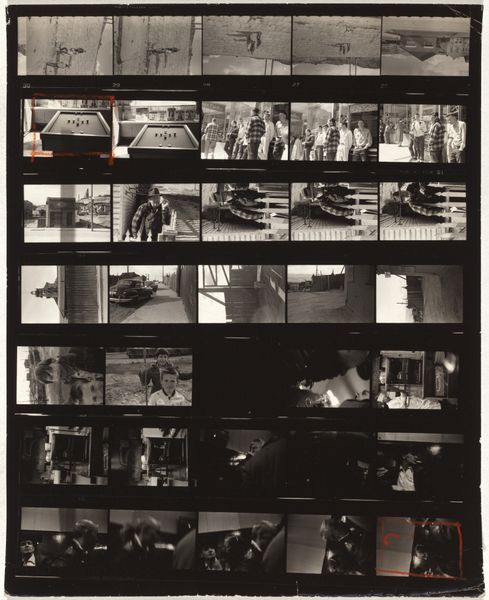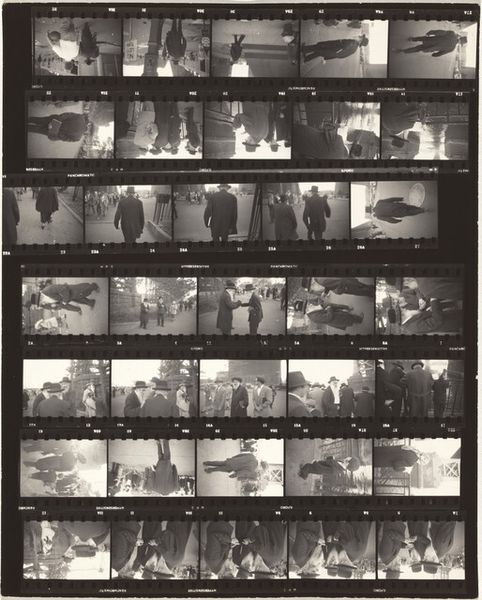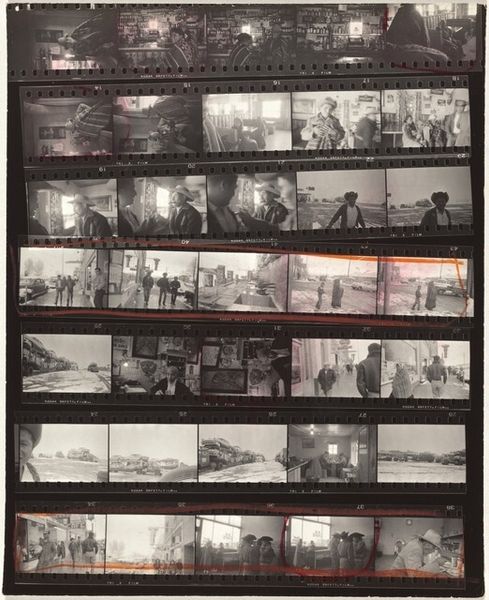
photography
#
excavation photography
#
dark object
#
landscape
#
dark hue
#
street-photography
#
photography
#
dark-toned
#
unrealistic statue
#
carved into stone
#
dark colour palette
#
dark shape
#
gloomy
#
history-painting
#
shadow overcast
Dimensions: overall: 25.2 x 20.2 cm (9 15/16 x 7 15/16 in.)
Copyright: National Gallery of Art: CC0 1.0
Curator: This is Robert Frank's contact sheet, titled "Filming Elia Kazan's "Wild River"--Tennessee 13," likely from 1959. The array of frames, the stark contrast... What are your initial thoughts? Editor: I'm struck by the composition. The sheet itself is almost like a fragmented narrative. Each frame is a scene, but seeing them together creates this sort of rhythmic, almost chaotic energy. How do you interpret the significance of presenting the images in this way? Curator: Observe the structure. Frank has meticulously arranged these frames, hasn’t he? Notice how the darkest and lightest tones interact. It's a study in contrasts – the shadows play against the diffuse light, creating an unsettling balance. It rejects conventional photographic framing and focuses more on tonal distribution and linear arrangement. Do you find this breakdown enhances the power of the images? Editor: Yes, I think so! By disrupting the clear image with these blurred compositions and light and shadow juxtapositions, the impact is certainly amplified. There's a sense of... raw honesty, maybe? Curator: Precisely. It dispenses with the aesthetic conventions, giving the work a more profound impact on its intrinsic elements like shadow and the raw quality of each fragmented snapshot. Think of the sequence itself. Editor: Right, like a movie reel of outtakes. I guess it shifts the emphasis away from perfect framing. Now that I think about it, it has a certain visual "uncleanliness". But how does the sequencing affect the emotional impact, if at all? Curator: It encourages us to examine the basic, constitutive aspects of each visual composition – line, shape, contrast, and texture – independent of narrative or social concerns. Editor: I see. So it pushes viewers to engage on a purely visual level first. Well, it really has made me appreciate how presentation impacts interpretation! Thanks for highlighting all these components. Curator: Indeed. Frank prompts us to appreciate form as much as any contextual consideration of cinematic artistry. That completes our examination of the work.
Comments
No comments
Be the first to comment and join the conversation on the ultimate creative platform.
